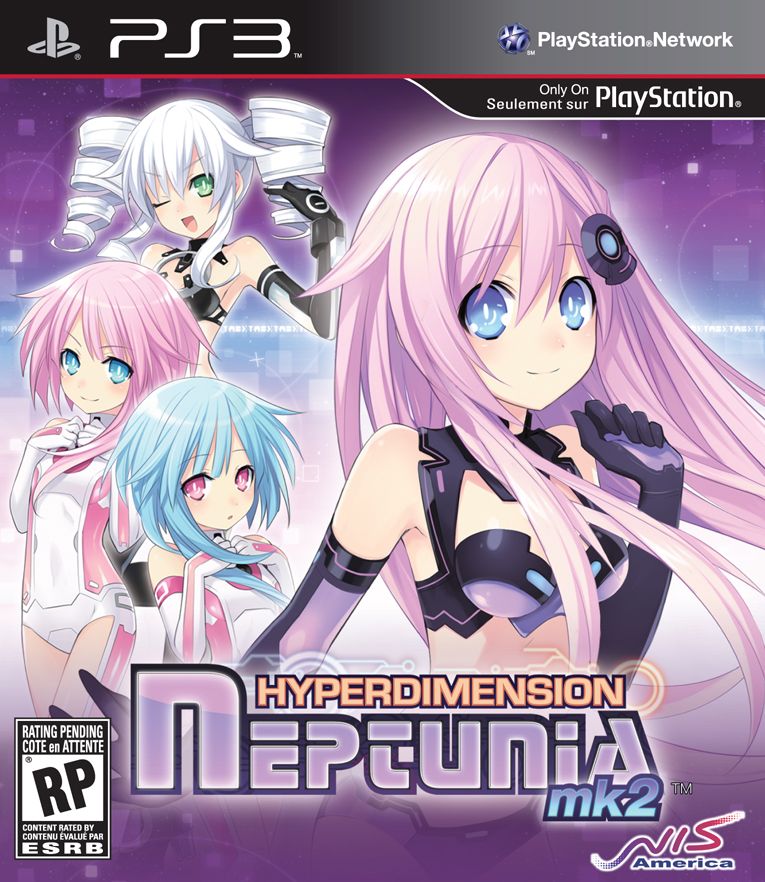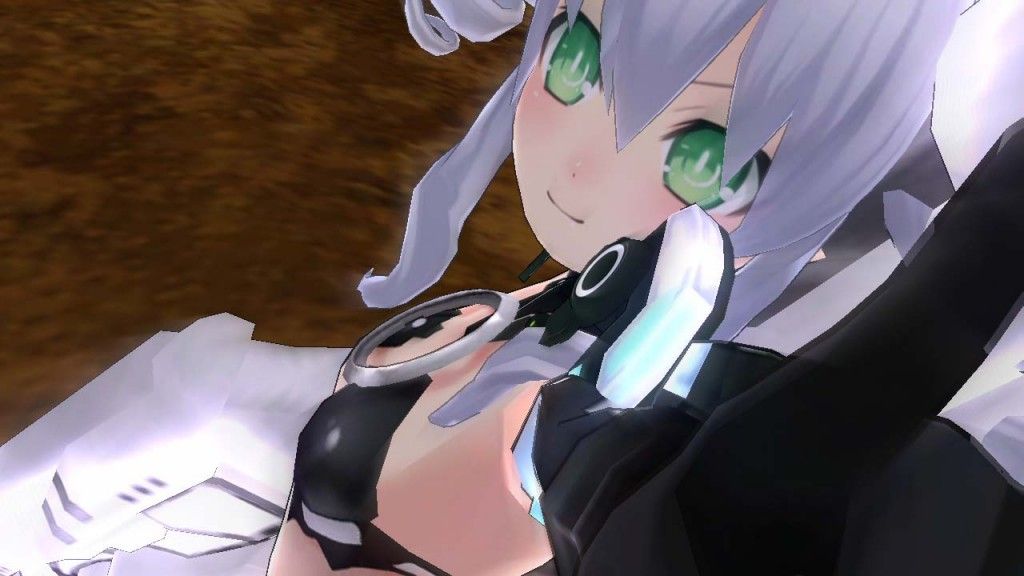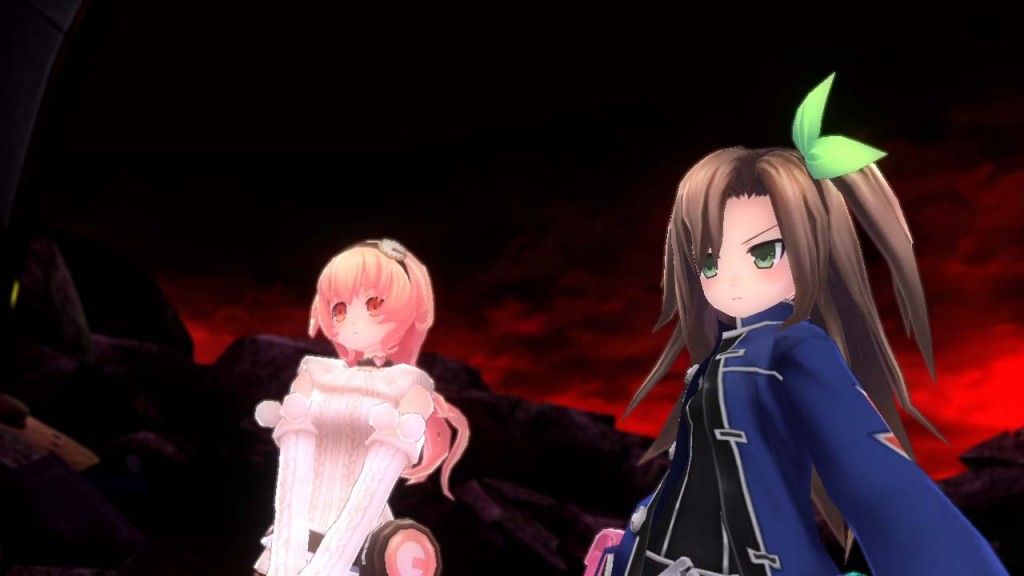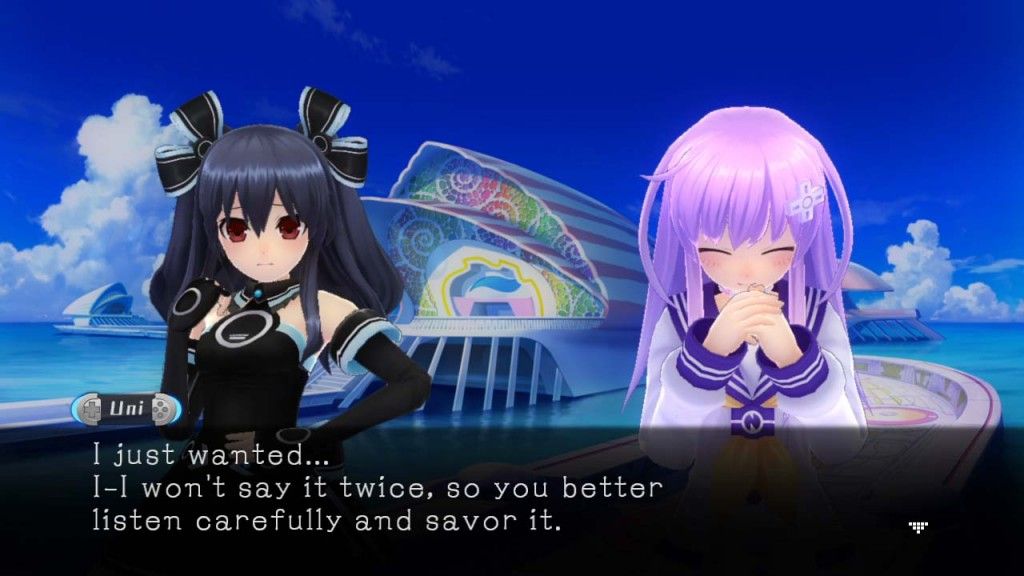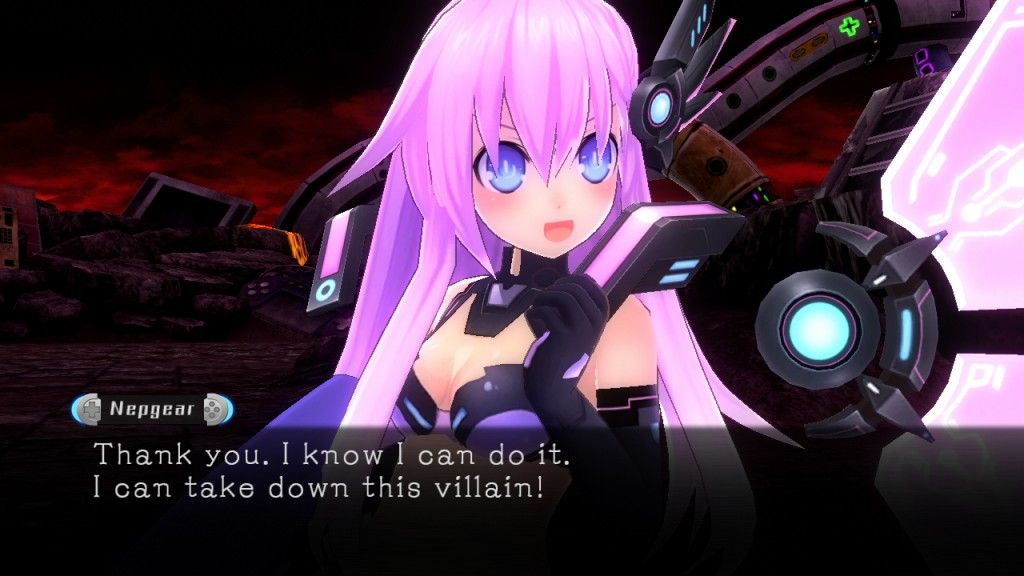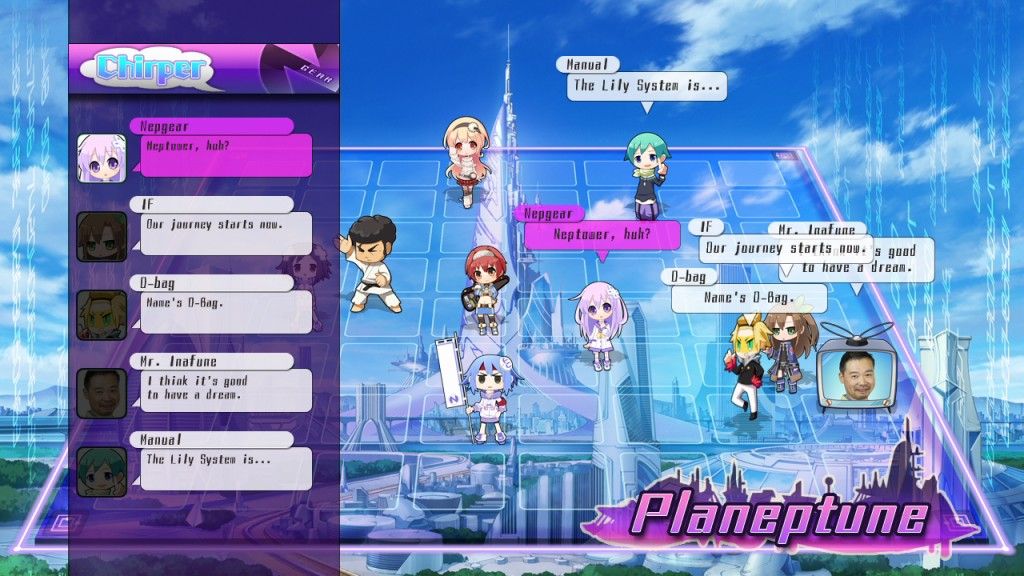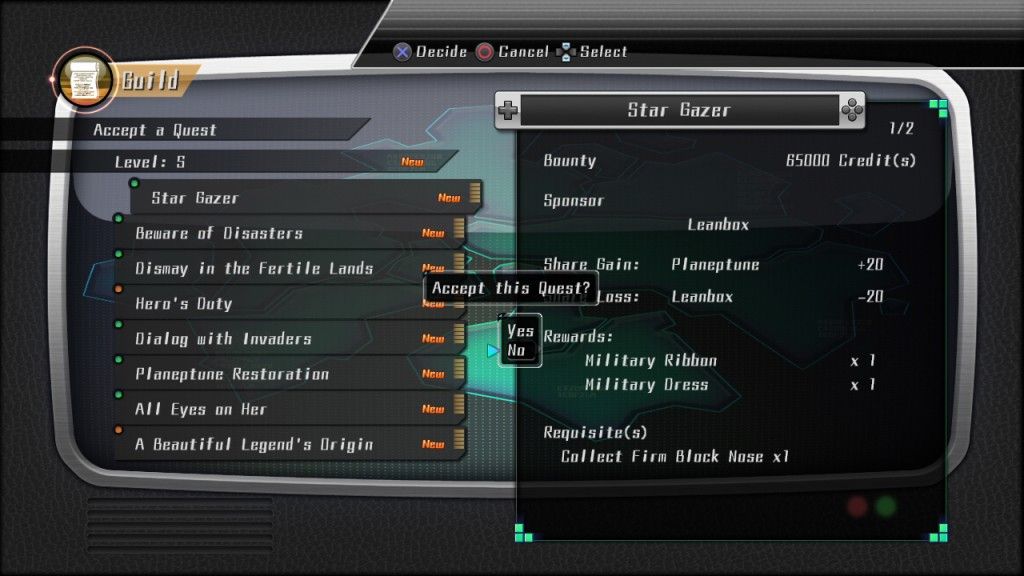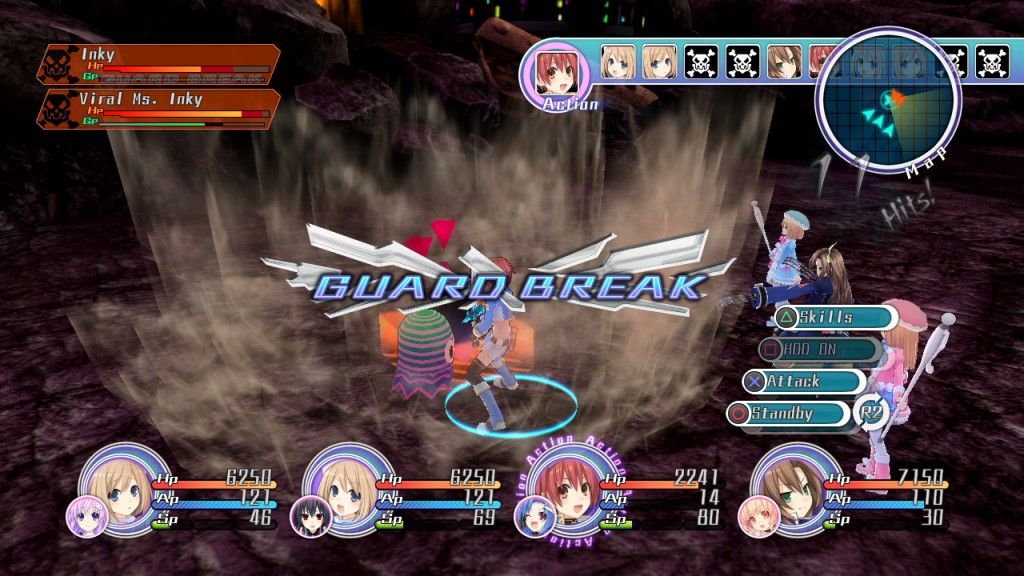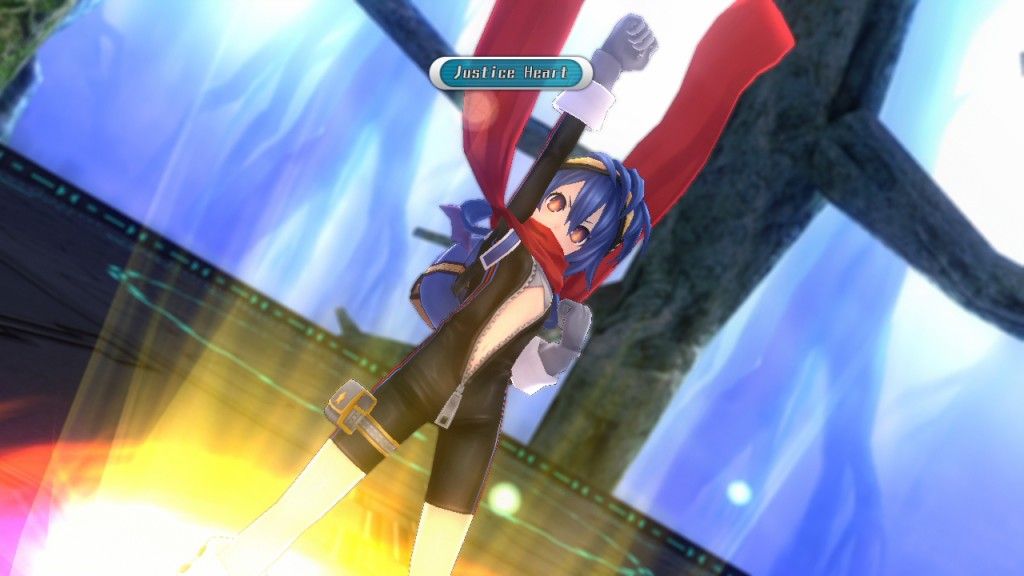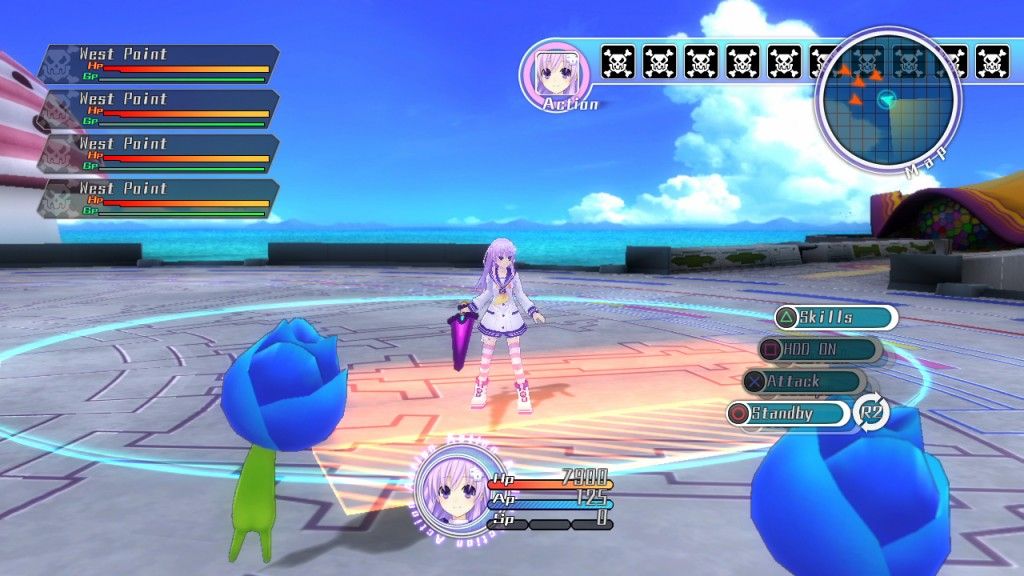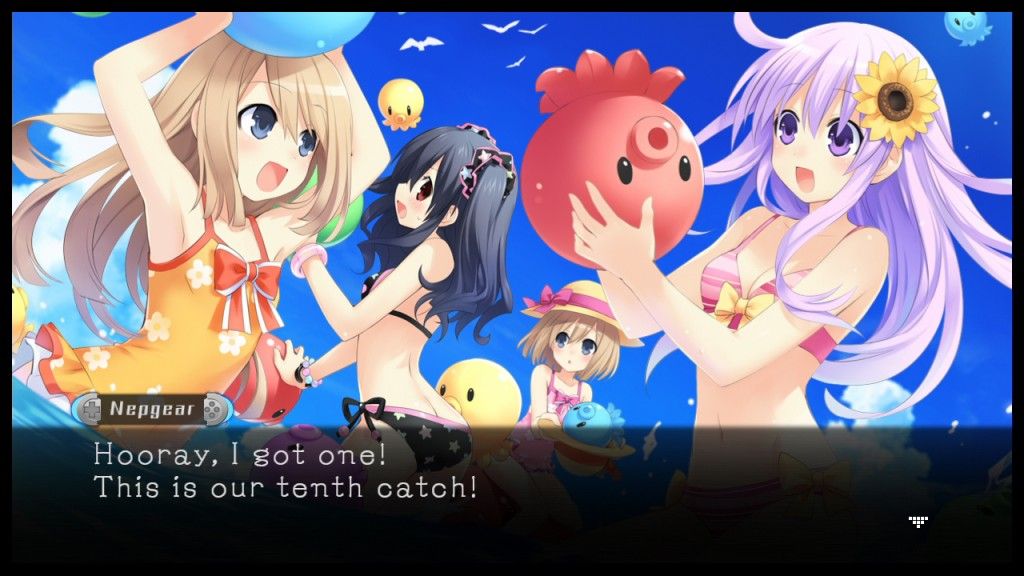Clever dialog, cute goddesses, snappy visuals – what more could you want from Hyperdimension Neptunia mk2? A peppy battle system and less plodding story, that’s what. Well, at least that’s what I personally wanted after playing the first Neptunia game last year. I will admit, I was a bit worried going into this second title that some things may not have improved as much as I would have liked. I love nothing more than to give a new franchise – and a JRPG at that – some great marks.
Did this sequel to last year’s rather original title live up to my expectation and fix the wrongs committed previously? Follow along and see.
Hyperdimension Neptunia mk-2 (mark 2, for those who didn’t put that together) picks up three years after the end of the previous title. Gamindustri’s villain, Arfoire, has been defeated, but a force that grew up after those events still follow in her wake – ASIC, or the Arfoire Syndicate of International Crime. The original CPUs (Console Patron Units) and Neptune’s sister, Nepgear, travel to the Gamindustri Graveyard to combat ASIC and hopefully rid the world of their influence once and for all. Unfortunately, the goddesses are overpowered and captured. Compa and IF, two of the main party members from the previous game, come to rescue them. Unfortunately, the only person they are able to free is Nepgear.
Barely escaping the area with their lives, the three vow to combat ASIC and save the world of Gamindustri once again. In those past three years ASIC has spread and they are actually in control of the majority of the world’s shares. The goal is to take back those shares by performing good deeds (quests) while, at the same time, searching for clues as to how to save the original CPUs.
Yes, to someone who hasn’t played the first game, I’m very aware that the last two paragraphs have been nothing but nonsense. Unfortunately, the game itself doesn’t do a stellar job of recapping the previous story and how things relate to this new one. Thankfully, however, once you get into this story, it progresses at a much better clip than the previous game.
I absolutely love the concept of this story, putting the real-world game industry and piracy into a setting where various companies, products and movements are represented by characters. I loved it before and I still love it. It’s one of the most unique ideas for a game story I’ve seen in a very long time, and that’s a breath of fresh air among all the rehashed and predictable narratives of some of the more popular titles. The bonus is that the pacing is very well done this time around and it never feels like you’re standing still in the story, even when you take breaks from it to work on some side questing.
All the characters we know and love from the first game are back, including my favorite, IF (or Iffy). There’s also Compa, Nisa, Gust and, of course, our heroine, Nepgear. Many of the relationships are already established, especially between Compa and IF, which leads to some of the game’s best dialog. Nepgear, like her sister before her, may seem innocent, but the dialog she presents throughout the game shows an oddly wise and intellectual individual, possibly attempting to set aside the stereotype that most moe-themed anime girls tend to have in these forms of media.
While the story is, in a way, fairly convoluted, there’s something about it that makes me smile the whole way through. The characters and dialog combine to make a unique, yet somewhat lacking, story into something that is actually fun to play, if only to see what the characters will do or say next.
While the English voice acting and music may not be anything outstanding, the audio does fit with the overall visual representation of the game industry and the fun, upbeat way in which things are displayed and played out on-screen. The voice acting in particular is a bit wonky at times. Some characters, such as Nepgear and IF, are actually pretty good, while others like Compa and Nisa are either way too grating or a bit over the top. However, regardless of the quality of the acting itself, each character’s voice represents them very well, and the way they’re portrayed in the game’s story.
Note also that the game offers the easy transition between English and Japanese voice acting, but, again, the use of the voice acting itself is rather random. Some important story segments have it, some don’t, and no optional dialog events include voice acting, unfortunately. I realize this is a time and money saver for the localization team, however it is a rather annoying issue that I really wish would be corrected with these niche titles.
Just like the first game, the highlight of the entire experience is the dialog. There are so many video game parodies, references and nuances in the dialog that it is an absolute joy to listen to, even though the voice acting might at times be a bit off.
Throughout the game, your characters move around to different locations on a world map of sorts. As the story progresses, various new areas are unlocked. Not all areas are required for story progression; there are some merely there as an area to complete side quests.
What disappointed me a bit was that, while there are major towns, when you visit all they consist of is a grid with little nendoroid-type characters displayed, which I assume are the town’s citizens. Then you’re given a list of services you can hit up while you’re there.
You have your typical shopping and sythesizing (which actually works very similar to crafting in the Atelier titles). But you also have Chirper, which is the game’s play on Twitter, where you can check out what the city folk are talking about. Sometimes, if you read enough of their chatter, you’ll get special event sequences that pop up.
While I found this an interesting feature, those event sequences showed up too sparsely to justify me going there each time a major story event happened just to see if something new was available. It actually became quite tedious. However, if you take part in these, your affection with various party members may increase, depending on who’s involved in the little dialog sequence.
Finally, the last service available in town is the guild, and this is the location you’ll probably be using the most on your adventures. It’s where you acquire all the quests you need to take back shares from ASIC and move them toward the region’s inhabitants. These quests come in two rather cliche varieties - kill quests and gathering quests.
While you can repeat the same quests over and over many times, this does get tiresome as there is very little variety. It also bothers me that, at times, more difficult quests pop up that you have no hope of completing at the time they can be accepted, so they sit in your log for hours and hours of play time, taunting you like the bully who stole your lunch money in junior high.
Overall, I think they missed a mark when it comes to these towns. I would have loved a more interactive, rendered town to run around in instead of this odd grid and menu system. But, it is what it is.
The visuals overall match the story and the uptempo atmosphere the entire game exudes. The art is awesome, and you're presented with various static "CG" scenes throughout the game as you unlock certain key story points. Some dungeons are lively and fun, other are rather boring. The worst offender is the "factory" aesthetic in dungeons, which is probably reused more times than you can shake a stick at. I really enjoyed the brighter, outdoor areas, though, as those really match the tone of the game more precisely.
Moving on to the battle system, we see probably one of the most improved areas over the first game. In the earlier title, battles were horribly slow, very tedious and the abilities were very offensive-based instead of giving you a wide variety of offensive and defensive capabilities.
In mk2, battles are still turn-based, however you can move around on the battlefield and place your characters wherever you want. Each character has a maximum movement radius, and you can move them wherever you want within that. The enemies also have one, so there are various strategies you can employ to somewhat control the flow of battle, depending on where you move.
In front of each front-row character is a box, which is the attack area of their weapon. You run up to the enemy until it’s highlighted with the box, then you know you’re ready to attack. That’s the simplicity of the battle system, but there’s so much more than that on the strategic side of things.
Because you can now move your character around, you can position them to make sure more than one character doesn’t get hit with an area of effect attack. You can also position yourself to attack more than one enemy at a time if they’re both highlighted in the attack box.
The combo system returns from the previous game, and it’s nearly the same, however that was never an issue. You can build your own ability combos in the menu between battles which, when certain abilities are used in sequence, finishes with a more powerful attack and regains some of your lost AP, so you can continue on the offensive.
It works a lot like a fighting game, actually, where certain face buttons are assigned certain types of abilities, and you can only map those types of abilities to those buttons. Perform the combo well and you’re rewarded with extra damage. There are, however, times you may not want to use the full combo, as well. Thankfully, this time around you don’t have to remember the button combos you set up. The possible combos are highlighted for you after you decide to attack. If you have two combos set up, one that starts with the square button and one that starts with the triangle button, they’ll both be highlighted. Once you hit one, the next button in the combo is highlighted, and so on and so forth.
This time around it’s also possible to have a support character for each of your front row fighters. Farther in the game once you get more than four characters, you can place a character in the back row of each of your four front row characters, and that back row character will support them with various passive effects and abilities, even though you can’t control them directly.
Finally, as I mentioned earlier, the balance between offensive and defensive abilities is much more even this time around. By far the biggest issue I had in the previous title’s battles was the odd, random use of restorative items. It made healing yourself in battle extremely tedious and resulted in more frustration than almost any game I had played up to that point.
That entire system has been rightfully trashed in mk2. Instead, more standard RPG abilities are put into use. While you’re still at the mercy of your allotted AP, you can actually heal whenever you want, providing the character has the ability to (and you have that from the start of the game with Compa).
Overall, battles progress much more smoothly and efficiently than the first game, bringing them closer in line with standard turn-based battles in other RPGs, but greatly reducing the frustration factor and the temptation to want to sling your controller across the room.
Overall, Hyperdimension Neptunia mk2 is a pretty significant improvement over the first title. If the issues I described about the first game were also negatives in your mind, you might want to give this second one a go. The art style is great, the dialog is amazing and the battle system actually feels polished this time around.
For fans of niche JRPGs, this is one of the most unique games out there and certainly deserves being checked out. With the improvements, though, come some issues that may or may not be important enough to hamper enjoyment of the game. I personally quite enjoyed this one more than the last. I think there is some high quality RPG gameplay amidst the issues, and if you have an eye for it, this can be one of the most surprisingly unique JRPGs to come along in quite a while.

